Drawdown on Lake Erling should help fight invasive species
ON 09-14-2022
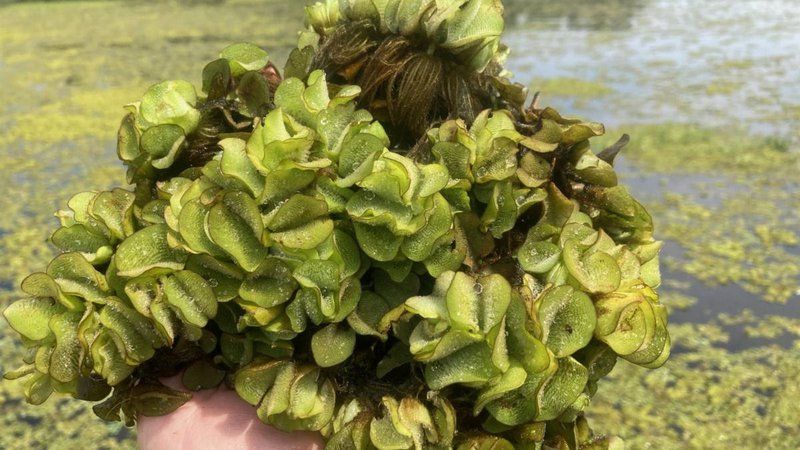
Sept. 14, 2022
Randy Zellers
Assistant Chief of Communications
TAYLOR — The American Gamebird Research Education and Development Foundation, under recommendation from the Arkansas Game and Fish Commission, is conducting a 5-foot drawdown of Lake Erling in Lafayette County to combat the spread of giant salvinia, a highly invasive aquatic plant species not native to the United States.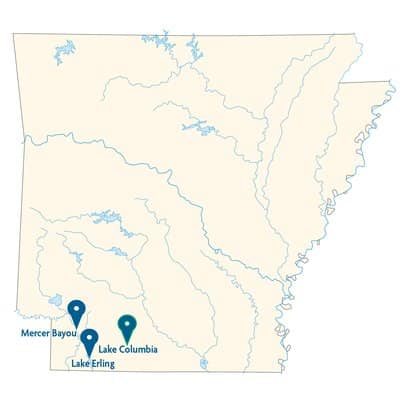
Giant salvinia, a free-floating South American plant that has become a major threat to fisheries in the southern U.S., was first spotted on a small portion of Lake Erling in 2018. Since that time the AGFC and AGRED, the lake’s owner, have worked together to monitor and minimize potential spread of the invasive species through information campaigns and management drawdowns. With the recent detection of the plant at nearby Mercer Bayou and the spread of the plant within Erling, AGRED worked with the AGFC to determine a plan that would help combat the aquatic nuisance species.
“Drawdowns have been shown to be effective at limiting the growth of salvinia and even decreasing the amount of salvinia on water bodies,” Jacob Martin, AGFC fisheries management biologist in the Camden Regional Office, said. “Drawdowns work by pulling salvinia out of marginal vegetation and exposing it to freezing temperatures and/or desiccation.”
Martin says the drawdown will remain in effect until March 1, 2023, at which time the 7,000-acre lake will be allowed to refill.
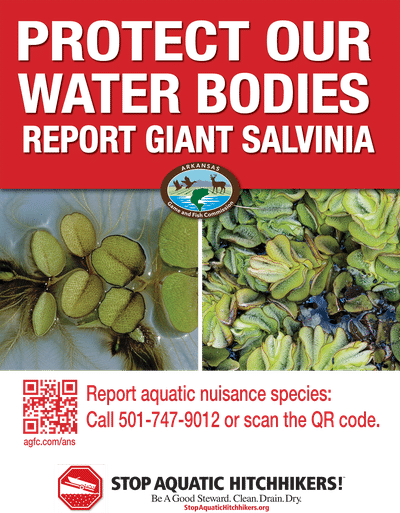
Once giant salvinia enters a body of water, it grows rapidly to cover the surface of a lake or stream, spreading aggressively by budding new plants. Giant salvinia can double in mass every three to four days. A single plant can multiply so rapidly that the plant will cover hundreds of acres within a few months. It forms floating mats that shade and crowd out important native plants, reduce oxygen content and degrade water quality for fish and other aquatic organisms, and block fishing and boating access.
All boaters are encouraged to visit the AGFC’s webpage on aquatic nuisance species, www.agfc.com/ans and learn how to identify some of the alien invaders that can harm Arkansas’s waters. The page also has a link to a reporting tool in case you see one of these noxious organisms while enjoying a day on the water.
It only takes one tiny plant, stuck to a boat trailer or hanging on duck decoys, to create a new infestation in your favorite fishing or hunting waters. All of this can be prevented by taking a minute to clean off your boat, trailer and recreational equipment between trips and allowing them to dry out.
Recent News
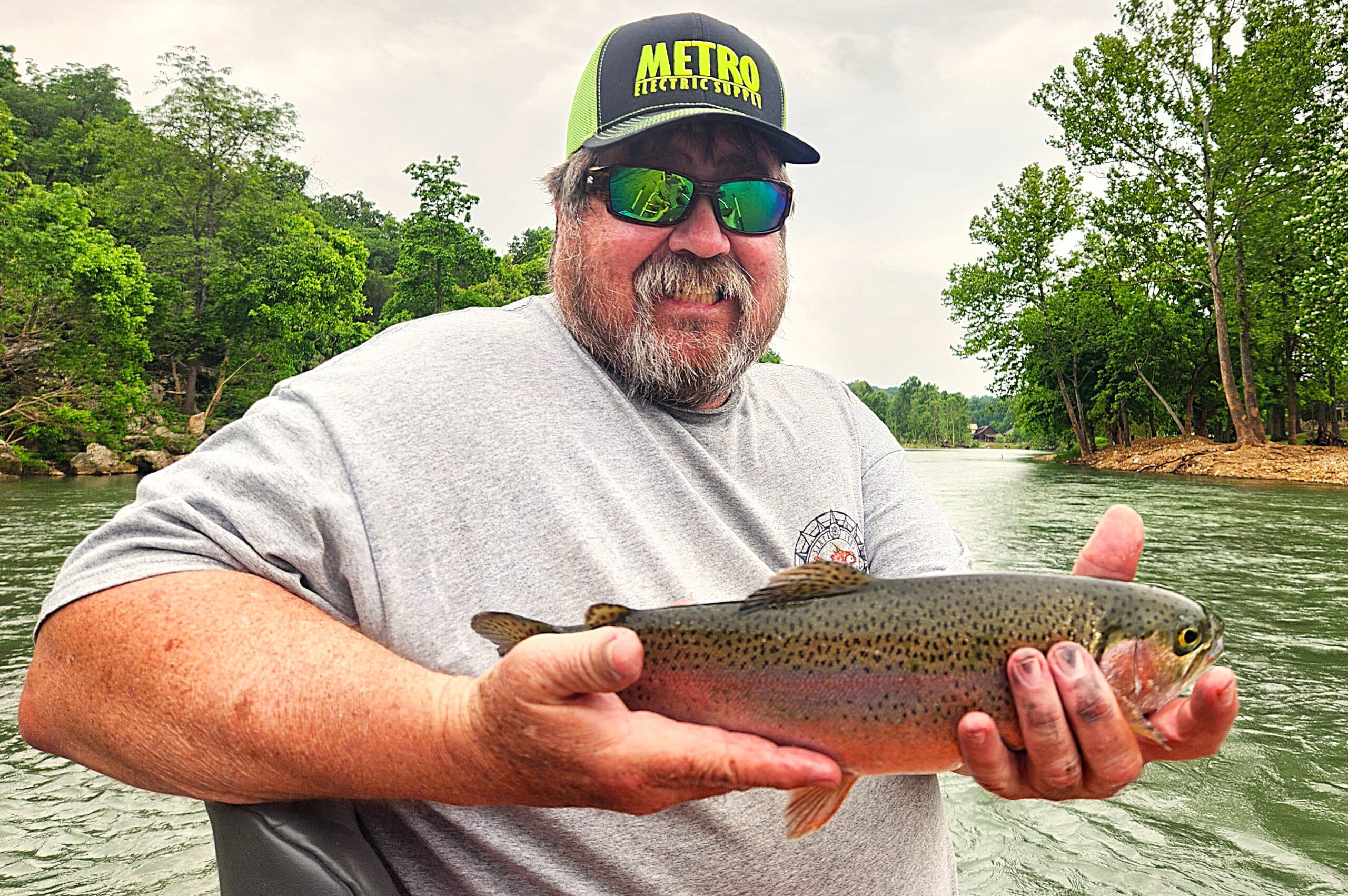
Arkansas Wildlife Weekly Fishing Report
Jun. 26, 2025
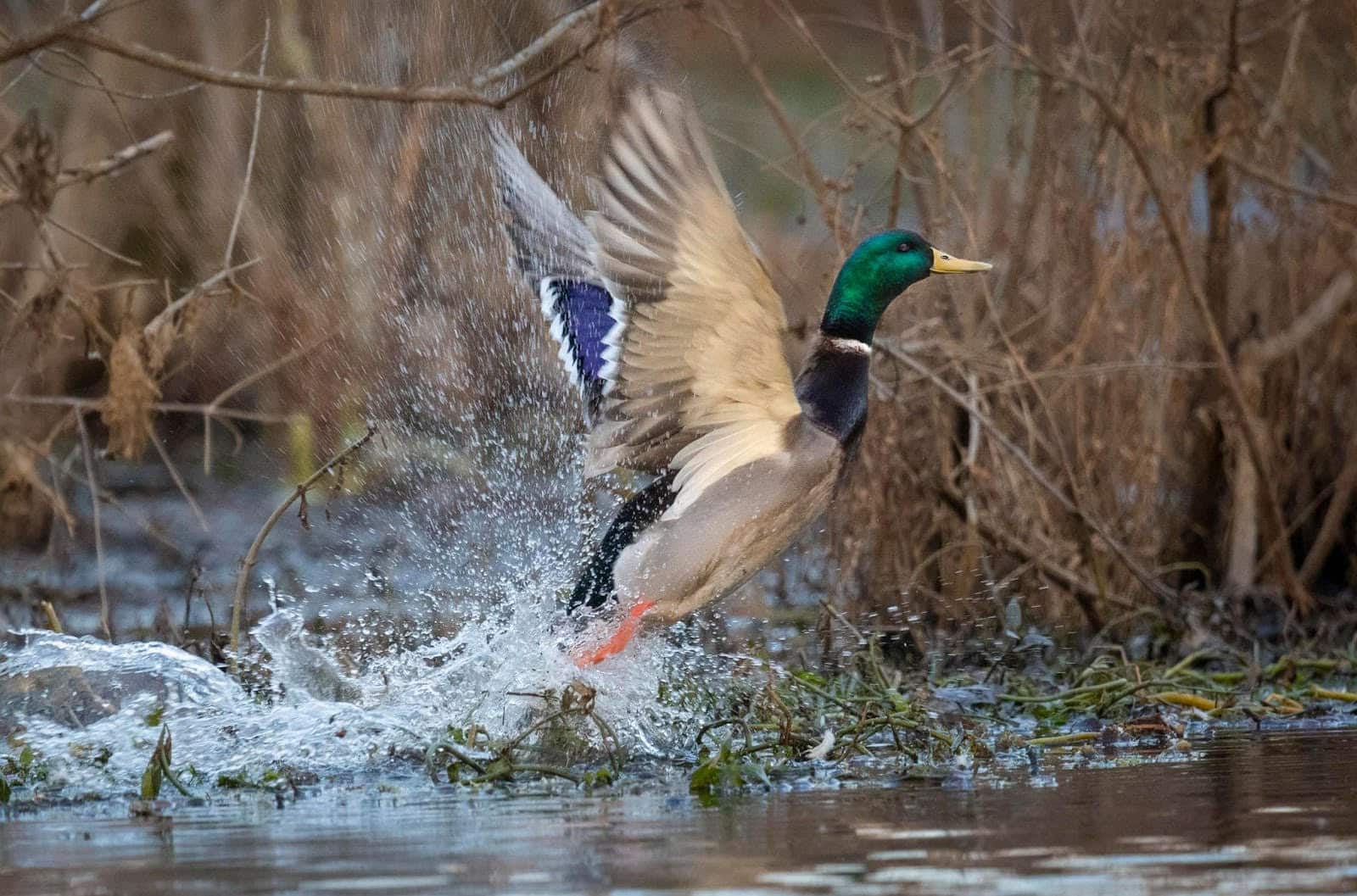
2025-26 Federal Duck Stamp reveal Friday
Jun. 26, 2025
Subscribe to Our Weekly Newsletter E-mails
Don’t miss another issue. Sign up now to receive the AGFC Wildlife Weekly Newsletter in your mailbox every Wednesday afternoon (Waterfowl Reports are published weekly during waterfowl season and periodically outside the season). Fishing Reports arrive on Thursdays. Fill in the following fields and hit submit. Thanks, and welcome!
